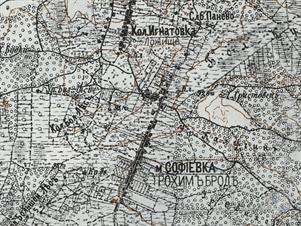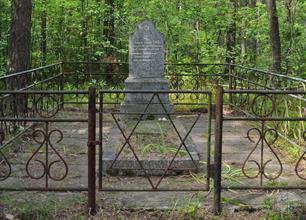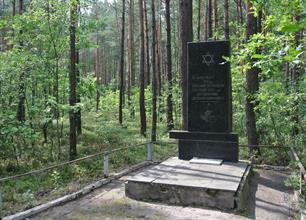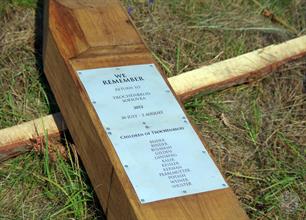Hnativka (Lozhysche)
Agricultural colonies of the Volyn province
Volynia region - list of settlements and location of objects
Hnativka (Lozhysche), 2022
Volynia region - list of settlements and location of objects
Hnativka (Lozhysche), 2022
Hnativka (Ignatovka, or Lozhysche), was founded in 1838 as the Jewish agricultural colony of the Silno volost of the Lutsk district of the Volyn province, not far from the similar colony of Sofievka (Trochimbrod). As well as a Trochimbrod, it soon became a township, but always remained in the shadow of the "senior" neighbor.
In 1919-39 - in the Volyn Voivodeship as part of Poland, since 1939 - as part of the Ukrainian SSR.
In 1885, 333 Jews lived in Hnativka,
in 1897 - 567 Jews (100%),
in 1921 - 577 Jews and 8 Christians,
in 1931 - approx. 900 Jews.
At the end of the 19th century Jews owned 269 tithes of land. In Hnativka there was a dairy farm, a mill and a leather factory.
In 1885, the synagogue acted in the town. The rabbi in Hnativka was Zalman Shuster, then Shimon Goldstein.
In 1912, a Jewish loan-saving partnership operated.
In the 1920s, 2 synagogues already acted. The Jews of Hnativka were adherents of the Hasidic courtyards Olyka, Stepan and Trisk (Turiysk). At this time, some Jews left for Palestine.
In 1932, the department of the Youth Zionist organization Beatitar was founded.
In 1919-39 - in the Volyn Voivodeship as part of Poland, since 1939 - as part of the Ukrainian SSR.
In 1885, 333 Jews lived in Hnativka,
in 1897 - 567 Jews (100%),
in 1921 - 577 Jews and 8 Christians,
in 1931 - approx. 900 Jews.
At the end of the 19th century Jews owned 269 tithes of land. In Hnativka there was a dairy farm, a mill and a leather factory.
In 1885, the synagogue acted in the town. The rabbi in Hnativka was Zalman Shuster, then Shimon Goldstein.
In 1912, a Jewish loan-saving partnership operated.
In the 1920s, 2 synagogues already acted. The Jews of Hnativka were adherents of the Hasidic courtyards Olyka, Stepan and Trisk (Turiysk). At this time, some Jews left for Palestine.
In 1932, the department of the Youth Zionist organization Beatitar was founded.
Hnativka was occupied by the Germans at the end of June 1941. A ghetto was created, Jews were used for forced labor.
On August 24, 1942, the Jews of Hnativka were transferred to the ghetto Sofievka (Trochimbrod). Lethers masters with families and some craftsmans were placed in the nearby village of Sedlishcha. All other Jews from Sofievka ghetto are more than 5 thousand people, including approx. 1200 from Hnativka, were shot in the forest near the village of Yaromel.
On September 21, 1942, in Yom Kipur, Jews from Sedlishcha were also killed.
During the actions, some Jews managed to escape. Several people joined the Jewish partisan detachment, which in early 1943 joined the partisan division of Sidor Kovpak.
Of the Jewish inhabitants of Hnativka, 10 people survived. The town itself, like a Trochimbrod, was completely burned and never again restored.
After the release of the film “All illuminated” in 2006, the history of Sofievka-Trochimbrod and Hnativka-Lozhysche attracted public attention. In 2012, the descendants of immigrants from Sofievka and Hnativka living in Israel arranged a large expedition to destroyed town. The expedition was headed by the grandson of the natives of Hnativka Haya Firer, a former Israeli Air Force Commander, Major General Avihu Ben Nun.
On August 24, 1942, the Jews of Hnativka were transferred to the ghetto Sofievka (Trochimbrod). Lethers masters with families and some craftsmans were placed in the nearby village of Sedlishcha. All other Jews from Sofievka ghetto are more than 5 thousand people, including approx. 1200 from Hnativka, were shot in the forest near the village of Yaromel.
On September 21, 1942, in Yom Kipur, Jews from Sedlishcha were also killed.
During the actions, some Jews managed to escape. Several people joined the Jewish partisan detachment, which in early 1943 joined the partisan division of Sidor Kovpak.
Of the Jewish inhabitants of Hnativka, 10 people survived. The town itself, like a Trochimbrod, was completely burned and never again restored.
After the release of the film “All illuminated” in 2006, the history of Sofievka-Trochimbrod and Hnativka-Lozhysche attracted public attention. In 2012, the descendants of immigrants from Sofievka and Hnativka living in Israel arranged a large expedition to destroyed town. The expedition was headed by the grandson of the natives of Hnativka Haya Firer, a former Israeli Air Force Commander, Major General Avihu Ben Nun.
Lutsk district, Volyn region
Sources:
- Jewish encyclopedia of Brockhaus & Efron;
- Russian Jewish encyclopedia;
- Eleazar Barco. Trochinbrod
Photo:
- Facebook Trochenbrod
- Jewish encyclopedia of Brockhaus & Efron;
- Russian Jewish encyclopedia;
- Eleazar Barco. Trochinbrod
Photo:
- Facebook Trochenbrod

- Home
- Shtetls
- Vinnytsia region
- Volyn region
- Dnipro region
- Donetsk region
- Zhytomyr region
- Zakarpattia region
- Zaporizhzhia region
- Ivano-Frankivsk region
- Kyiv region
- Kropyvnytskyi region
- Luhansk region
- Lviv region
- Mykolayiv region
- Odessa region
- Poltava region
- Rivne region
- Sumy region
- Ternopil region
- Kharkiv region
- Kherson region
- Khmelnytskyi region
- Chernihiv region
- Chernivtsi region
- Cherkasy region
- Crimea
- Synagogues
- Cemeteries
- Objects & guides
- Old photos
- History
- Contact
Jewish towns of Ukraine
Jewish towns of Ukraine
My shtetl
My shtetl
Donate



